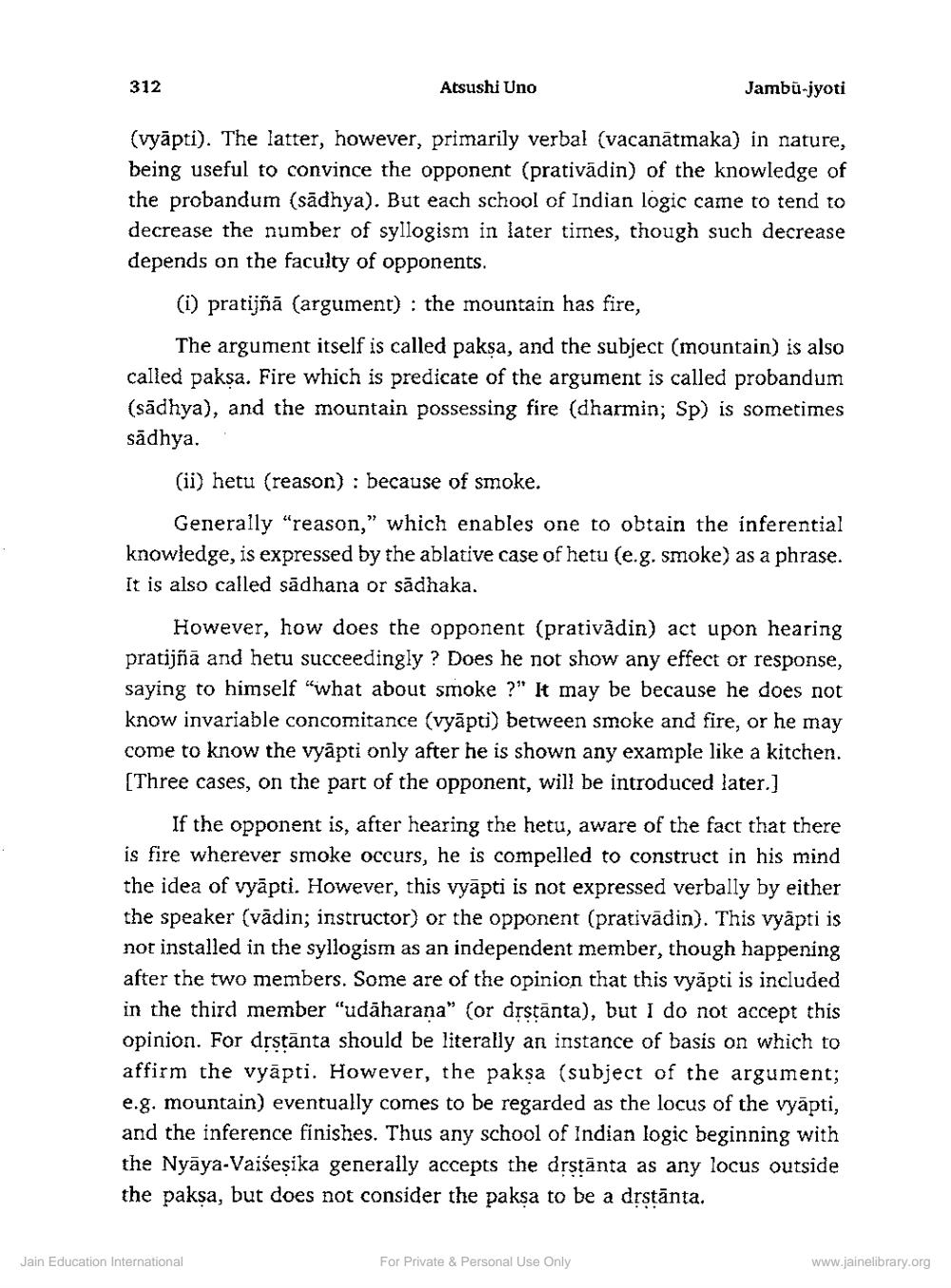Book Title: Antarvyapti Interpreted in Jainism Author(s): Atsushi Uno Publisher: Z_Nirgranth_Aetihasik_Lekh_Samucchay_Part_1_002105.pdf and Nirgranth_Aetihasik_Lekh_Samucchay_Part_2 View full book textPage 3
________________ 312 Atsushi Uno Jambu-jyoti (vyāpti). The latter, however, primarily verbal (vacanātmaka) in nature, being useful to convince the opponent (prativādin) of the knowledge of the probandum (sādhya). But each school of Indian logic came to tend to decrease the number of syllogism in later times, though such decrease depends on the faculty of opponents. (i) pratijñā (argument) : the mountain has fire, The argument itself is called paksa, and the subject (mountain) is also called pakșa. Fire which is predicate of the argument is called probandum (sādhya), and the mountain possessing fire (dharmin; Sp) is sometimes sādhya. (ii) hetu (reason) : because of smoke. Generally "reason," which enables one to obtain the inferential knowledge, is expressed by the ablative case of hetu (e.g. smoke) as a phrase. It is also called sādhana or sādhaka. However, how does the opponent (prativădin) act upon hearing pratijñā and heru succeedingly ? Does he not show any effect or response, saying to himself "what about smoke ?" It may be because he does not know invariable concomitance (vyāpti) between smoke and fire, or he may come to know the vyāpti only after he is shown any example like a kitchen. [Three cases, on the part of the opponent, will be introduced later.) If the opponent is, after hearing the hetu, aware of the fact that there is fire wherever smoke occurs, he is compelled to construct in his mind the idea of vyāpti. However, this vyāpti is not expressed verbally by either the speaker (vādin; instructor) or the opponent (prativadin). This vyāpti is not installed in the syllogism as an independent member, though happening after the two members. Some are of the opinion that this vyšpti is included in the third member "udāharana" (or drstānta), but I do not accept this opinion. For drstānta should be literally an instance of basis on which to affirm the vyāpti. However, the paksa (subject of the argument; e.g. mountain) eventually comes to be regarded as the locus of the vyāpti, and the inference finishes. Thus any school of Indian logic beginning with the Nyāya-Vaišeșika generally accepts the drstānta as any locus outside the paksa, but does not consider the paksa to be a drstānta. Jain Education International For Private & Personal Use Only www.jainelibrary.orgPage Navigation
1 2 3 4 5 6 7 8 9 10 11 12 13 14
